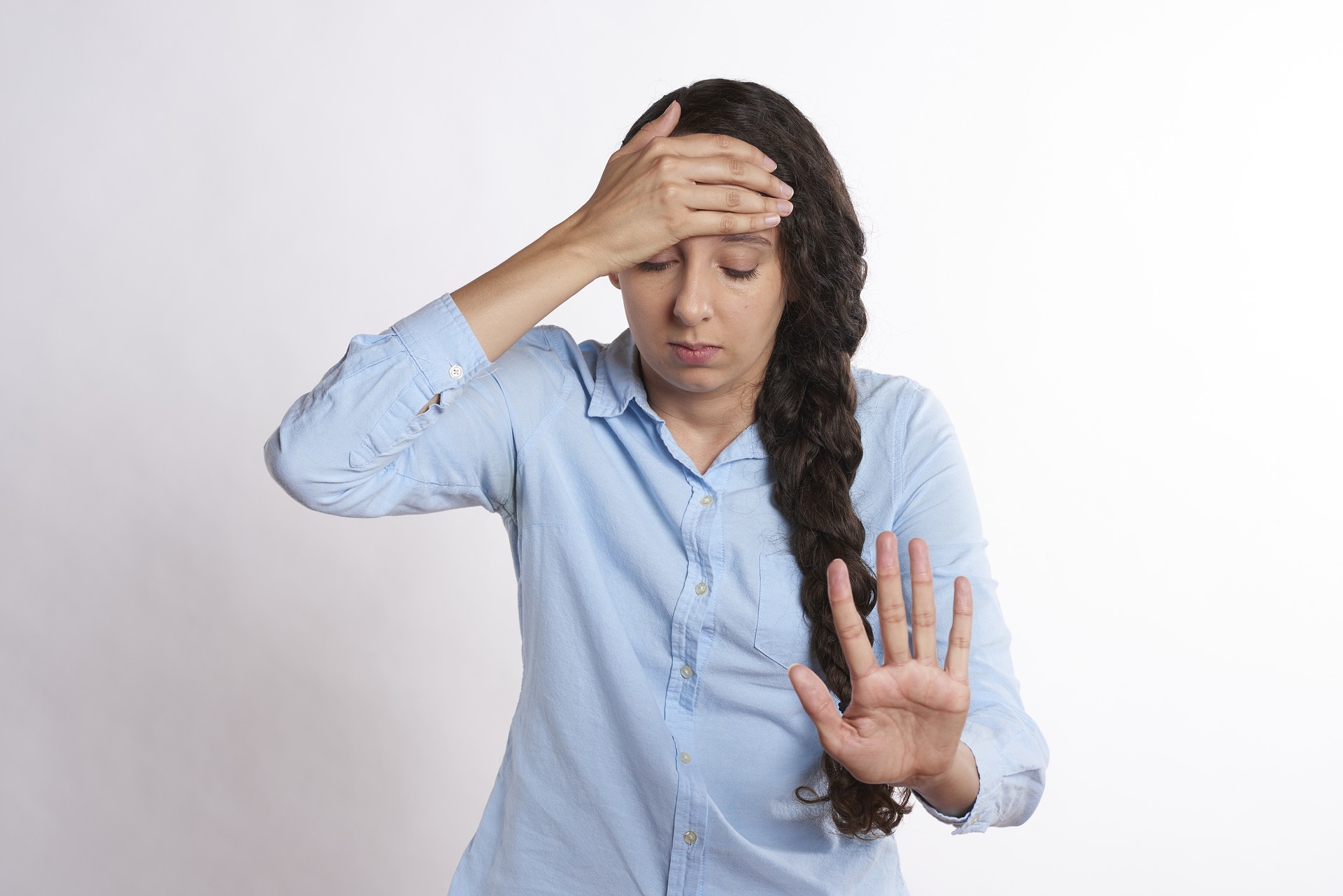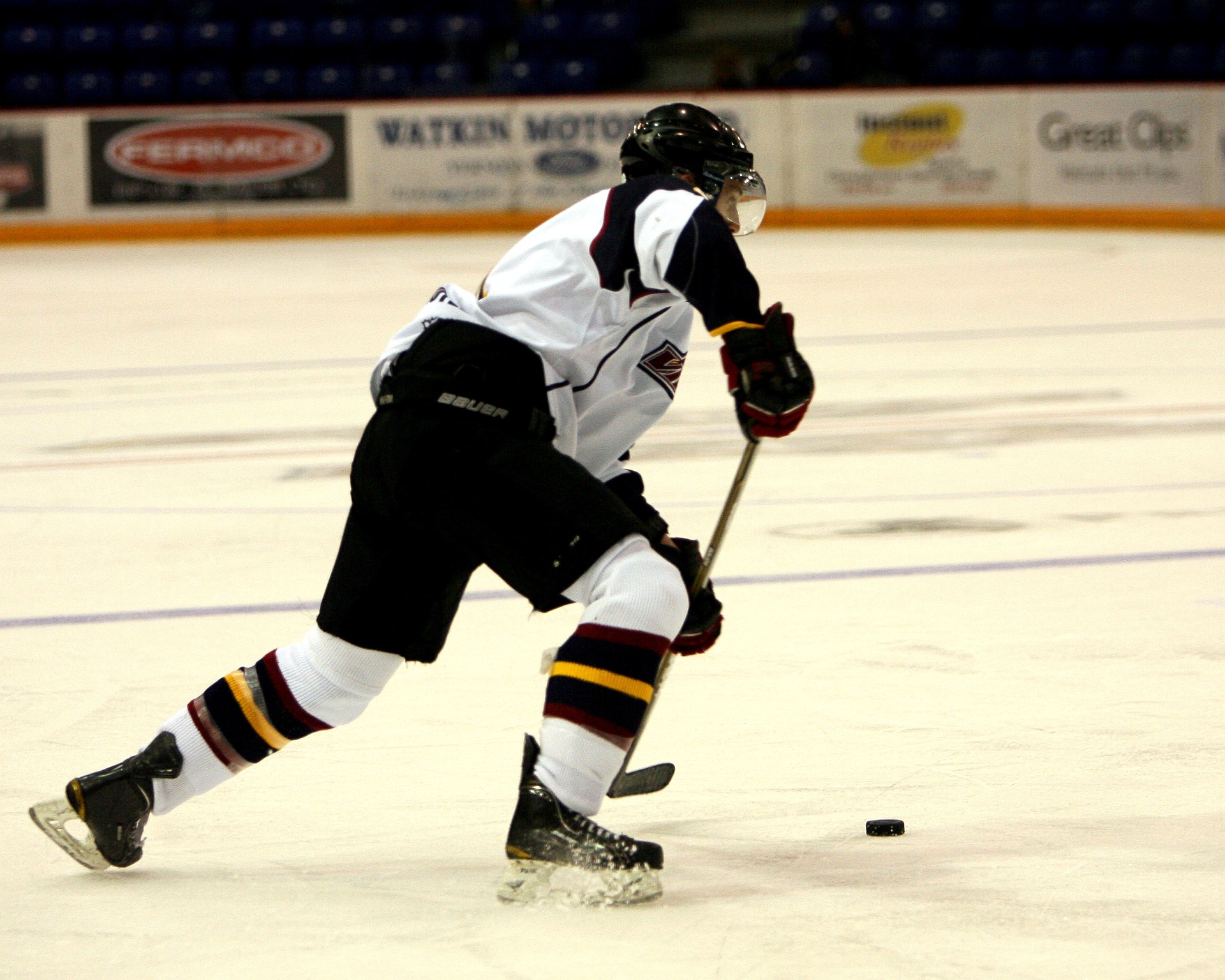Even though pick-up/rec league hockey is typically ‘no check,’ certain levels of contact are inevitable in such a fast-paced sport. Collisions between players, or players and the boards and ice, are quite common. With extreme caution surrounding head injuries becoming ever popular amongst kids and professional athletes alike, you too should know how to spot concussion symptoms and take proper precautions if you’ve sustained an impact to the head.
Main Causes of Concussions

Concussions are most often caused by violent hits to the head, neck, or upper body, as well as sudden acceleration or deceleration of the head. These types of actions thrust the brain into the inner walls of the skull, causing bruising and other damage. While anyone can get a concussion, younger and older individuals are at a greater risk of developing more serious side effects. But Shinny is a no contact hockey league- so there’s no risk of concussions, right? Wrong. Even seemingly minor, accidental collisions with other players, the boards, or the ice can cause a concussion.
Common Concussion Symptoms
Let’s say another player falls and hits his head against the boards, but he’s able to get back up. How can you tell if he just needs to take a short break, or if he’s potentially suffered a concussion? Look for these signs. There’s a good chance he has a concussion if he:
- Has a headache or feels pressure in his head
- Feels dazed (seeing spots)
- Has ringing in his ears
- Vomits
- Feels nauseous
- Feels dizzy
- Is unable to remember the fall (amnesia)
- Feels confused, or
- Feels tired
It’s important to remember that if anyone who suffers from a head injury reports any of these symptoms, they should not be allowed back in the game. Playing with a concussion will only increase their chances of receiving a second injury. A secondary concussion which occurs before the first one is completely healed is that much more dangerous.
Emergency Concussion Symptoms
While any concussion symptom means that the player in question should be removed from play, the following symptoms are more severe and require immediate medical attention:

- Loss of consciousness
- Repeated vomiting
- Changes in mood or behavior
- Reduced physical coordination (like difficulty walking)
- Disorientation (inability to recognize places or faces)
- Slurred speech
- Worsening headache
- Different sized pupils
- Excessive fatigue (constant state of drowsiness), or
- Seizures
Symptoms such as these are signs of more serious damage to the brain. The brain could be bleeding, which is a very severe condition that needs to be treated immediately.
Long-Term Effects
If you are the one who suffered a head injury and subsequent concussion, there are a few more symptoms to be aware of. Even after the initial concussion has passed and you’re well on your way to recovery, there are a few long-term effects you may experience. These include persistent headaches, vertigo, and an increased risk of a secondary concussion. Your brain is a fragile organ, so be sure to give it the full amount of time to heal per your doctor’s orders before getting back on the ice. Also be aware that even after you’ve made a full recovery, the cumulative effects of multiple concussions is something to be aware of. If this isn’t your first concussion, make sure to tell your doctor.
How to Prevent Concussions

Concussions may be serious injuries, but luckily there are a few simple ways you can drastically reduce your chances of suffering from one after an impact or fall. When playing in Shinny leagues, helmets are always required because that’s the #1 way to prevent serious head trauma. Besides helmets, other protective gear is helpful as well, even if it isn’t required. Any additional protective gear will help to reduce impacts and therefore may prevent concussions and other injuries — most of our players choose to wear additional gear.
There are also two other ways you can reduce your chances of receiving a concussion (or any other injury for that matter). The first is to exercise regularly. This may not seem helpful at first, but the more fit you are, the better balance and stability you’re likely to have out on the ice. And more balance and stability means less risk of falling! Finally, remember to play with your head up. If you’re looking down at the puck the whole time you won’t be as aware of your position on the ice. Always pay attention to where you are in relation to other players and the boards to avoid accidental collisions.
Conclusion
Just because Shinny is a no contact league doesn’t mean concussions can’t happen. Know the symptoms of concussions as well as when to seek emergency medical care. A brain injury is more than just another injury, so it’s important to do everything possible to prevent one while out on the ice. Always keep your safety and the safety of those around you in mind.
Shinny USA
Now that you’re a pro at preventing and recognizing the symptoms of concussions, it’s time to get out there on the ice and play some hockey! Shinny USA has a variety of adult pick-up hockey programs for players of all skill levels. Whether you’re a former pro or someone who only knows the basics, we’ll find the perfect league for you. Sign up today and one of our representatives will follow up with a confirmation and any information you need to get started.
